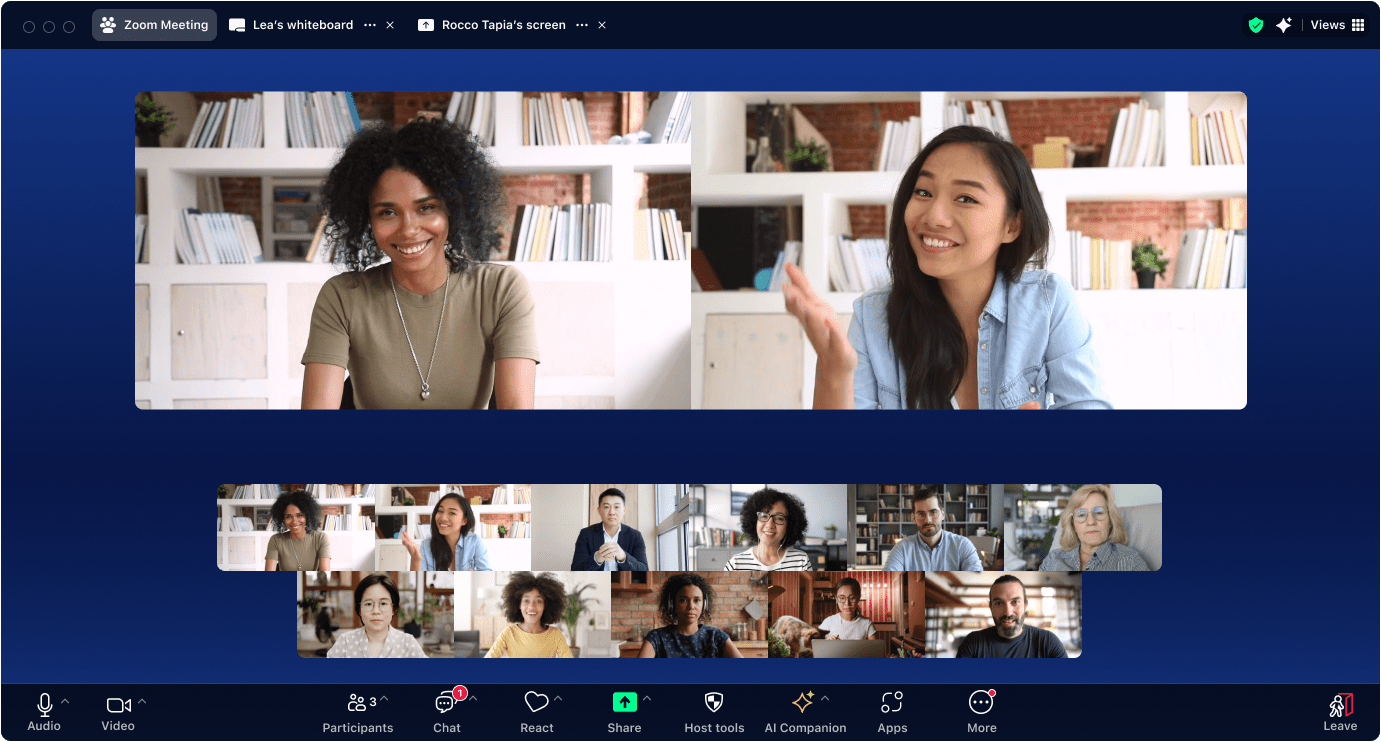Zoom introduces Zoom Workplace. The company bundles almost all of its collaboration tools under this category. An AI component is also included in the price and is intended to set the offer apart from the competition.
Zoom today introduces Zoom Workplace. Workplace is a new comprehensive platform with which Zoom aims to be the preferred partner for organizations to facilitate teamwork, enable (digital) collaboration and combine productivity with meetings. Zoom itself describes Workplace as an AI-driven collaboration platform.
Existing functionality with AI glue
Some nuances are important in this introduction. While Zoom is rolling out several new features today, Workplace is essentially a bundling of existing features with a new bow around them. On the platform we find: meetings, team chat, telephone, email and calendar, appointment planner, clips, whiteboard, notes, rooms, workplace reservation, digital signage, visitor management and Workvivo. The glue between all of this is the Zoom AI Companion.
Zoom is redesigning its applications to integrate them more tightly. For example, a Meetings tab appears in the Zoom app, making it easier to collaborate before, after, and during meetings. During meetings, you can more easily collaborate within documents (e.g. from Google Workspace). Team Chat gets an upgrade for asynchronous communication thanks to new tabs, and there are some useful optimizations across the platform.
A new user interface with a simplified taskbar, improved navigation and more personalization options is intended to further enhance the Workplace platform. Zoom seems to want to make it clear that it offers more than just the ability to set up video conferences. By better connecting these additional capabilities, especially by bundling them under one flag, Zoom wants to make it clear that it helps organizations in almost every area that has to do with collaboration.
Ask the AI
The AI Companion is the focus of the announcement. This companion uses generative AI to support customers across the portfolio. Zoom describes the AI Companion as a ubiquitous assistant, but in practice we mainly see AI functions around meetings. For example, AI can create transcripts of meetings, summarize them and immediately extract tasks from them. It is also possible to compile the agenda of a meeting based on previous summaries. The functionality lives below the denominator Ask AI Companion.
AI Companion currently has access to data from Zoom meetings, mail, team chat, notes and documents. Integrations with third-party applications will be added in the short term. Think Microsoft documents. Zoom Phone will also get AI integration. Zoom emphasizes that its AI capabilities are and will remain available to all paying Zoom customers.
With this in mind, it’s good to know that in Belgium you won’t be able to use all of the AI Companion’s features in Dutch. Zoom recently expanded support to include transcriptions and meetings in our language, but AI functionality in Teams Chat remains limited.
Tough competition
Zoom has the unenviable task of competing with Microsoft Teams, which Microsoft is cleverly pushing along with the Microsoft 365 productivity suite that companies typically already pay for. The company must therefore justify why an organization is spending money on an additional party. Zoom Workplace offers sufficient arguments for this. By integrating AI as standard into an offering that combines meeting capabilities with collaboration capabilities, customers gain useful features that can save employees time that are not available from competitors at no additional cost.
